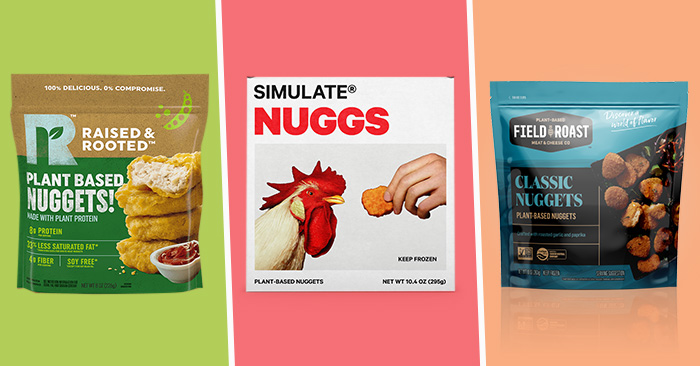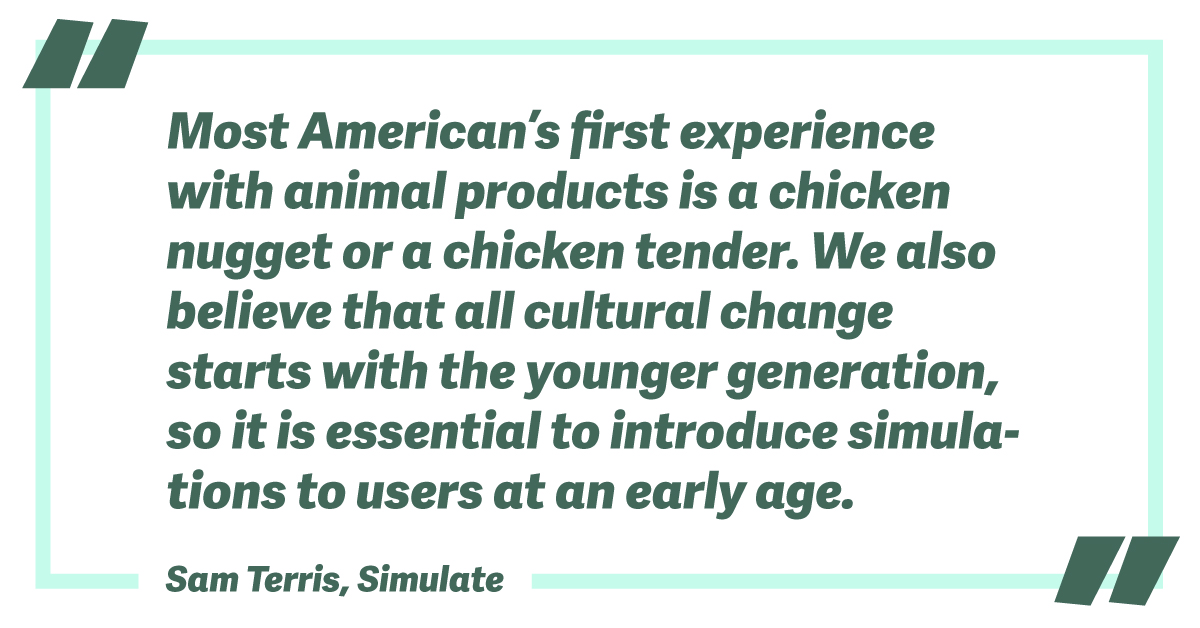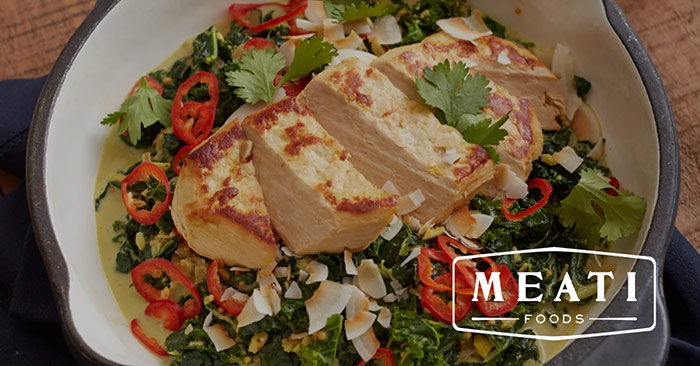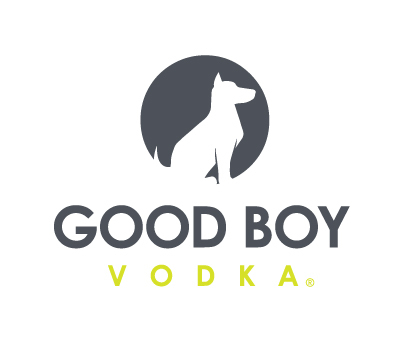Golden Nugget: Plant-Based Brands Mine Fast Food Formats

From record-breaking funding rounds to technological innovations evoking science fiction, plant-based meat has dominated food industry headlines over the last few years. But these companies continue to face the need to turn headlines into profits, especially while hewing to the core values that led them to launch in the first place.
But rather than create major disruption, for many brands, the journey to the center of the plate has been through fast food classics, like burgers and nuggets, that are emblematic of the environmental and health issues that led to a plant-based push in the first place. The reason? Simple familiarity: just as nuggets and burgers aren’t as challenging to consumers as whole muscle cuts, they’re also more appealing, to most eaters, than slabs of seitan or other plant-based meat substitutes.
But as these brands stage an incremental revolution, infiltrating some of the most common fast food formats, the broader change that environmental advocates hope plant-based products represent remains a generation behind, largely uncommercialized.
Despite the interest in plant-based nuggets, many brands still see the category as simply a stepping stone, with the real opportunities lying in producing meat alternatives that better align with consumers’ daily diets and cooking habits. Whole-cut meat products are the highest margin and “most desirable segment” of the $1.7 trillion global meat market, according to GFI analyst Kyle Gaan, and there’s a host of new companies chasing that prize.
But you’d never know it looking at the current crop of successful companies: all too often, they fall back on the familiar.
Take the brands that have drawn the most attention lately. Though the plant-based protein category has been around for decades, the recent arrival of rival meat alternative companies Beyond Meat and Impossible Foods has accelerated category growth through one core innovation: veggie burgers that taste and look like meat. Folding in a clever marketing strategy of infiltrating fast food and fast-casual restaurants, together, the two companies have captivated the interest and dollars of consumers and investors, and, in turn, secured retail distribution across natural and conventional channels.
Beyond the products themselves, the two companies have had an outsized impact on the industry, setting a standard for buzz and brand building. While the plant-based meat category is valued at $1.4 billion, investment in alternative proteins reached $3.1 billion in 2020, according to Good Food Institute (GFI). So the pressure is now on all brands to convert years of buzz into retail sales to satisfy investors.

So what’s next for plant-based brands? Chicken nuggets, it seems. Chicken is the most-consumed meat in the country, according to the USDA, and nuggets, like burgers, are an easy stepping stone for meat eaters to transition to a plant-based diet. They’re also particularly appealing to families and younger consumers, fit right in on restaurant menus, particularly fast food, and most importantly, are cheaper to make than other product types.
Even at those brands seeking a textural holy grail, like Daring Foods, there’s been a reversion to the nugget: CEO Ross Mackay said his company uses a proprietary process involving high-moisture extrusion to produce its plant-based chicken pieces. The expensive, bespoke process is “worth it” to create a product with more versatility and similarity to actual chicken than a breaded nugget alternative, he said.
Nevertheless, in 2020, Daring Foods, citing consumer demand, launched a breaded version of its chicken pieces.
“It’s a very low barrier to entry for consumers looking to step into this category, whether it be first time or second time or other,” Mackay told NOSH. “It’s one of our most successful, sought after products both in food service and retail.”
Companies and restaurants are already jumping at the opportunity, with plant-based chicken nuggets starting to appear on menus from KFC to McDonald’s. The big brands, Beyond Meat and Impossible, are both rushing new breaded “chicken” products to market. Beyond Chicken tenders debuted in restaurants earlier this month, and, according to Bloomberg, Impossible is reportedly launching nuggets this fall.
Those announcements may have seemed to usher in a wave of nugget launches that resembles the rise of plant-based burgers, but unlike when Beyond Meat and Impossible launched their burgers, they’re relatively late movers in the chicken nugget space, especially in retail, where they already competition from both CPG giants and well-funded startups.
Simulate’s plant-based NUGGS is one such example. The company’s nuggets are now available at more than 5,000 retail locations, including Walmart, Target, Whole Foods Market and Sam’s Club. Simulate is being aggressive, having raised $50 million in June to fund its expansion to 10,000 more retail locations before the year’s end. Among multinational corporations, brands like Kellogg’s Morningstar Farms sub-brand Incogmeato, Tyson’s Raised & Rooted and JBS’s Planterra Foods sub-brand Ozo are all also betting on the plant-based chicken nugget space.
They all seem to know: you can build an empire, one nugget at a time.
Looking for the Lighter Lift
Empire building is expensive, of course, and that explains the fact that more brands are turning to finished foods rather than imitation “whole cuts.” Like the ground “beef” they make for burgers, nuggets, strips, and patties are just plain easier and cheaper to produce.
Consider Tofurky, one of the grandest dames of the vegetarian protein set. As the name implies, Tofurky began as a soy turkey roast alternative. But even with this history, the company has broadened its reach to burgers and sausages.
Products with a ground texture are simply “easier to mimic” using plant proteins like soy, wheat and pea, according to CEO Jaime Athos. Consumers already expect chopped and formed products to have a variety of textures, which isn’t true for the complicated fibrous texture of whole muscle meat, he said.
Extrusion — a process that turns fluids into a semi-solid — is currently the leading method for plant-based meat production. Brands using extrusion utilize one of two types of processes: low-moisture, which is suitable for grounds, nuggets and sausages, and high-moisture, a typically more expensive process which can produce a more fibrous meat texture. Regardless of the methodology, extrusion isn’t great at making products that mimic muscle texture.
And that’s important because companies know consumers won’t accept just anything, with even bigger players such as Beyond Meat learning this the hard way. The company launched its first alt-chicken innovation, chicken strips made with soy and pea protein meant to resemble a sliced chicken breast, in 2012, but later discontinued the line. The strips weren’t “delivering the same plant-based meat experience as some of our more popular products,” the company claimed on its website. The company’s latest tender launch utilizes the more common ground texture, and is also breaded.
That means that companies have to devolve their offerings from finished products back to the basics in order to evolve the category, notes NUGGS founder Ben Pasternak.
“We’ve focused on simulating highly processed meats and working backwards to getting more of a complex science to ultimately actually simulate the animal itself,” Pasternak said.

The Foodservice Funnel
Foodservice operators are also contributing to the ongoing nugget boom. Despite the challenges COVID-19 has presented to the foodservice channel over the past 18 months, plant-based meat brands have continued to gain distribution in the channel, where nuggets and other breaded products are popular.
Though restaurants may tout more noble reasons, quick-service and chain restaurants are largely seeking out products that can work with their existing menus and kitchen processes, said T.K. Pillan, principal at Powerplant Ventures and founder and chairman at plant-based quick service restaurant chain Veggie Grill. That means a lot of nuggets, burrito fillings and chicken patty sandwiches, not to mention the recently announced plant-based chorizo at signature chain Chipotle.
The CFO of Yum! Brands, which operates KFC, Pizza Hut, and Taco Bell, recently touted the company’s partnership with Beyond Meat to create plant-based menu items.
“We’re excited about the long-term potential plant-based protein menu items have to attract more customers to our brands, especially younger consumers,” said Yum!’s Chris Turner. “We expect this Beyond Meat partnership to strengthen our brands’ capability to offer delicious, plant-based menu items that are driven by consumer demand for more diverse protein options.”
It’s an opportunity brands often can’t say “no” to. Launching into foodservice with a large chain is an instant revenue bump, and doesn’t always require the FDA’s approval of new technologies as Generally Recognized as Safe (GRAS). For example, Impossible Foods was sold in restaurants and fast food chains before the FDA issued GRAS approval for the sale of its uncooked patties at retail in 2019.
Foodservice also offers manufacturers co-branding opportunities — like Burger King’s Impossible Whopper or Beyond Fried Chicken at KFC — to elevate their own brand awareness.
“Most consumers have no idea who supplies animal meat to McDonald’s and Burger King, and transparent co-branding could be a competitive, point-of-difference edge for alternative protein companies,” a recent GFI report noted.
Furthermore, the partnerships offer joint innovation opportunities, letting brands test out new products in a limited release before they commit to a full retail rollout. The question remains, however, if the channel is helping speed acceptance of plant-based meats or holding it back.
“Plant-based burgers are now well-established in retail and on foodservice menus, but the market is lacking a breadth of great-tasting plant-based chicken in all formats, not just nuggets,” Alison Rabschnuk, business development director, plant protein, North America, at Kerry told GFI.

Nugget Nostalgia
Tell that to the consumers, though, for whom nuggets sit at the junction of chicken’s popularity, the need for plant-based alternatives, and the lack of decent form factors beyond fast foods.
Emily Klooster, marketing director for the LiveKindly Collective, whose U.S. brands Fry’s and Like Meat both offer plant-based chicken nuggets, patties and pieces, noted that to gain consumer acceptance, brands need to offer plant-based products that consumers are eager to eat.
“Americans love their burgers, but they don’t exist just on burgers, of course,” Klooster said. “We believe that we can grow this market by really bringing plant-based alternatives into American kitchens one meal at a time [through] recipes that people are familiar with that they already love, and making simple swaps.”
This familiarity factor is key, Athos noted, adding that nuggets are comfort food and evoke a sense of “nostalgia.” They also are particularly beloved by younger consumers. According to Simulate co-founder and COO Sam Terris, targeting children may be the path forward to establishing a new generation of plant-based eaters.
“Most American’s first experience with animal products is a chicken nugget or a chicken tender,” Terris said. “We also believe that all cultural change starts with the younger generation, so it is essential to introduce simulations to users at an early age.”
Meanwhile, though the pandemic may have brought about renewed consumer interest in cooking at home, the need for easy family meals has remained — or in some cases, grown. Just like their animal-based counterparts, burgers, nuggets and patties are also the most convenient forms of plant-based meat to prepare, said Scott Reed, Frozen Category Manager at Sprouts. Sprouts, Reed said, wants to make plant-based meal solutions top of mind for shoppers. In new stores the retailer plans to allot more space in the frozen department for plant-based meat items. Some stores will feature a “Plant Power” display highlighting plant-based proteins, he said, and Sprouts has added “Plant-Based” tags calling out options on shelves.

Hatching a New Category
With so many new entrants in the space, however, competition is already getting stiff, and it might not be worth it to jump in with another me-too launch.
“If you’re going to be successful [in plant-based nuggets], you’ve got to really have a compelling product,” Pillan said. “And there’s a lot of really good products…. Potentially, there’s much more blue ocean in some of the other categories.”
The question is, though, whether the current generation of brands is built for that kind of exploration. Though some brands are trying to find ways to create higher quality meat alternatives using existing methods, the ultimate path forward may not lie in current technologies at all. While high-moisture extrusion can be used to mimic smaller pieces of plant-based chicken, a number of well-funded startups like Meati, Next Gen Foods and Aleph Farms are already seeking to commercialize methods like fermentation, cell cultivation, 3D printing and fiber-spinning as novel methods to mimic whole cut meats like chicken breasts and thighs. Upside Foods — formerly Memphis Meats — recently announced a partnership with a high-end San Francisco restaurant for its cell-grown chicken, although it’s awaiting regulatory approval. There’s no mention of nuggets.
“I think that as we are better able to create analogous structure using plant proteins, we’re going to see more products that are larger pieces and cutlets mimicking whole muscle rather than relying on that chopped and formed texture,” Athos said.
That change, however, will still “definitely be a transition” for shoppers, notes Daring Foods’ Mackay. What will seed their success, he believes, will be the demand created by successful early introductions to things like nuggets, however.
“Plant-based chicken is an emerging category and consumers are still familiarizing themselves with the current offerings on the market,” he said. “We are very confident that consumers will be open to and excited about different iterations of plant-based chicken (wings, breasts, etc.) that emerge in the future.”
Of course, if those fail, there’s always plant-based chicken… fingers?
















